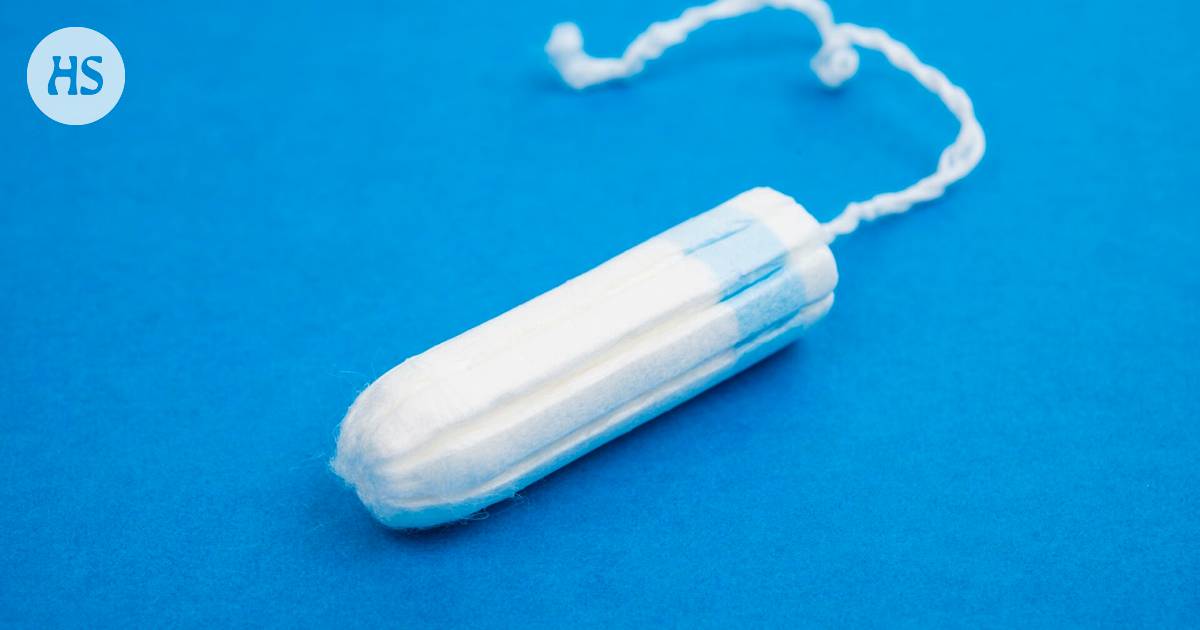Heavy metals were found in tampons, but there are a lot of them elsewhere too.
The summary is made by artificial intelligence and checked by a human.
Heavy metals such as lead, cadmium and arsenic were found in tampons in the EU and the USA.
The concentrations are very small and do not pose a risk to health.
Food is the most common source of heavy metals.
Lead can affect the development of a child’s nervous system and in an adult it can cause the slowing down of long peripheral nerves.
New research heavy metals have been found in tampons sold in the EU and the United States.
Among other things, lead, cadmium and arsenic were found in the tampons. Among the toxic metals, the concentrations of lead were the highest, around 0.12 micrograms per gram.
Emeritus professor and toxicologist Group Court evaluated the research and told whether tampons pose a risk to health, and what effects heavy metals have on humans.
What do the heavy metal levels in tampons look like?
Concentrations are very small.
With the concentrations presented in the study, tampons would contain approximately 0.077 micrograms of arsenic, 0.2 micrograms of cadmium and 3.6 micrograms of lead per month. This is assuming that all the substances contained in the tampon would be absorbed, and they would be used in about ten months.
In practice, the intake of heavy metals from tampons is one thousandth on both sides of what you get from other sources.
Normally, these heavy metals are obtained monthly in a hundred and a thousand times the amount compared to the concentration of tampons. The biggest source of heavy metals is food.
How are heavy metals absorbed from the vagina?
As an absorption route it’s not very good. The exact absorption is not known.
For example, the absorption of lead occurs only through passive diffusion, i.e. substances move from a more concentrated concentration to a more dilute one. Lead or anything else can hardly be absorbed from tampons when the concentrations are so low.
It is different if lead ends up in the intestines through the mouth.
There is a special transport mechanism in the intestine for the absorption of calcium, and the same is true for iron. As metals, lead and cadmium are somewhat related to these, which makes them able to use this mechanism. Without it, they would be poorly absorbed through the mouth.
Where do people most commonly get heavy metals into their bodies?
Food is the most important of all, because everyone has to eat many times a day. Different metals can be found in many different sources.
There is a little bit of cadmium found in the soil in everything. Plants have a transport mechanism for calcium, and cadmium also enters the plant via this mechanism.
Cadmium accumulates in the liver and kidneys, and can be found, for example, in abundance in the liver of deer. Hunters may especially avoid using the liver of an old moose individual.
A known source of methylmercury is predatory fish.
Lead can also be absorbed into the body from breathing air. In the old days, it was found in vegetables, when they were cultivated by the roadsides.
Lead exposure was particularly high in the 1970s and 1980s, when motoring became more common. Lead was used in gasoline at the time, and a lot of it spread into the open air. That’s when children’s lead levels grew high.
What kind of effects do heavy metals have on human health?
In the middle the risk group for the effects of lead are small children, because lead interferes with the development of the nervous system.
It has been estimated that the brain development of children exposed to lead suffered in the percentage range. It means that those most exposed to lead were on average several percent dumber than those who had not been exposed.
For adults, lead causes, among other things, a slowed down function of the long peripheral nerves, which weakens the function of the muscles of the limbs.
Arsenic is associated with a cancer risk. Cadmium, on the other hand, can damage the liver and kidneys.
Is it worth worrying about the heavy metal content in tampons?
Chemistry is progressing rapidly, and the determination methods are becoming more and more accurate. Then you can find all the substances you are looking for in all people and products.
How many substances are found somewhere reflects more on the capabilities of the laboratory than anything else.
The most important thing would be to know which substances are present in such quantities that there is real harm to health or the environment.
